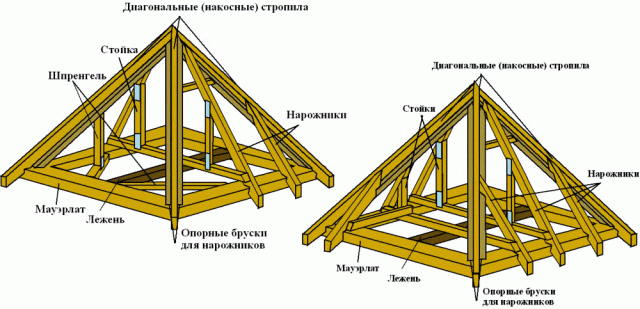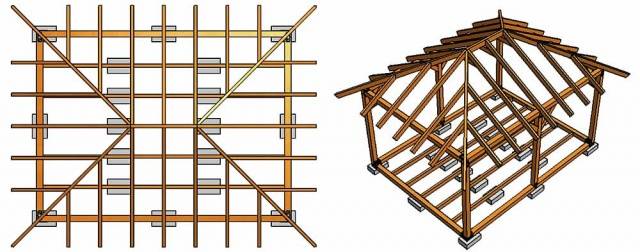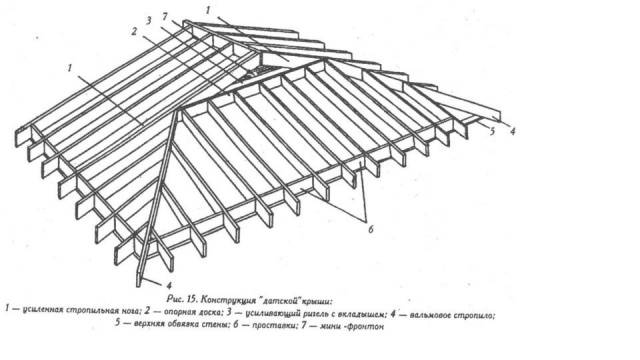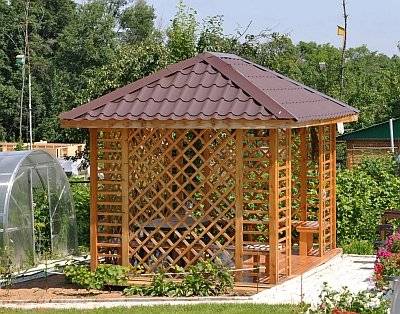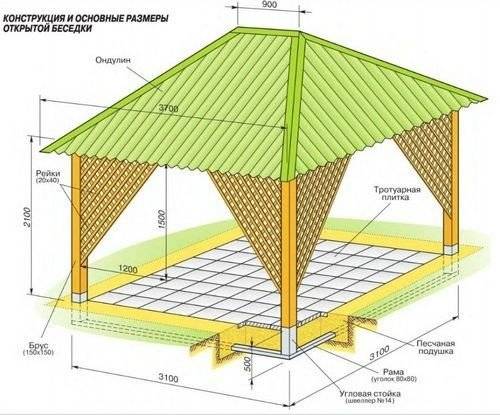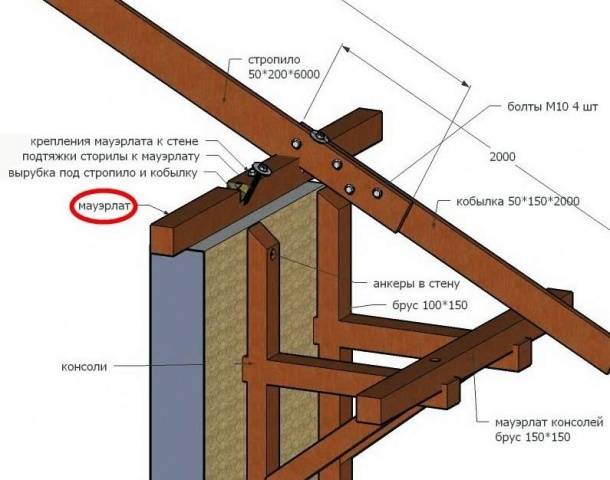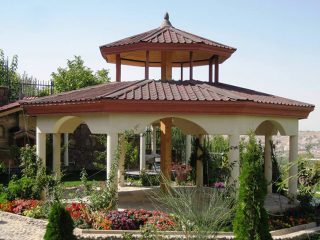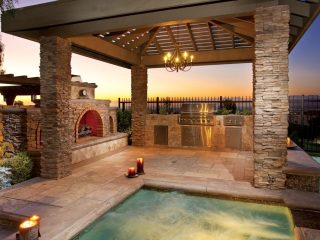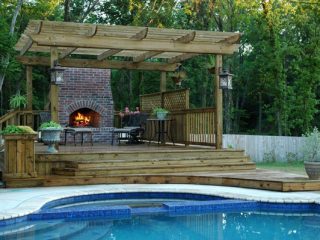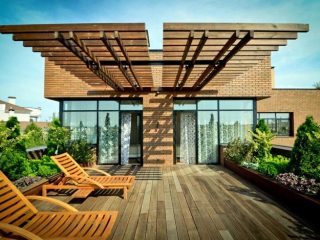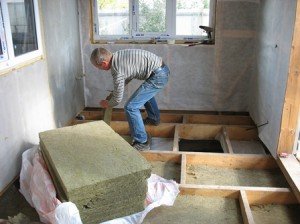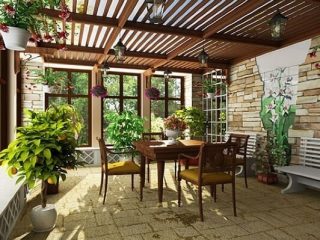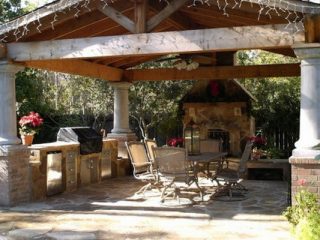Content
Gazebos have recently become a very common feature of suburban areas and dachas. The owners come up with all sorts of forms for their buildings to create a comfortable place to relax. If you don’t have the desire or means to build an unusual gazebo, there is a classic option in the shape of a square or rectangle. The design is quite simple to construct thanks to the simple roof. We will now talk about how to make a hipped roof for a square and rectangular gazebo with your own hands.
Three types of hipped roof
Before you start building drawings of the future roof, you need to take into account that hipped roofs have three subtypes:
- A hipped structure is often called a pyramidal roof because of its appearance. It consists of four slopes in the shape of equal triangles. The hip roof design does not include a ridge. The vertices of the triangles connect at one point and form a pyramid. The base of the frame can only be a square, so such a roof is not built on rectangular gazebos.
- A hip roof is the simplest option for a rectangular gazebo. A special feature of the design is the shape of the slopes.The frame consists of two end triangles of the same size, called hips. The shape of the remaining two identical slopes is made in the form of a trapezoid. At the point where all four planes connect, a ridge is formed.
- The half-hip structure is also called a Danish roof. Similar to the hip roof, the half-hip roof consists of two triangular and two trapezoidal slopes connected by a ridge. A distinctive feature is the triangular hips, broken at the top. That is, from a large triangle you get a trapezoid and a small triangle.
Each hipped roof of the gazebo has its own trump card. The hip roof type is the most common. It is advantageous to construct it in terms of saving material. The design does not require the manufacture of pediments, and short beams are used for rafters. A rectangular gazebo cannot do without a hip roof. If you want to do something amazing, then preference can be given to the Danish version.
Pros and cons of a hipped roof
Hip-slope roofs are distinguished by their aesthetic appearance, make it possible to use any type of roofing, and do not interfere with a good view from the gazebo. The design is a godsend for lovers of unusual shapes. The hipped frame can be made in different styles. For example, if you extend the overhangs and install arched corner rafters, you will get a beautiful Chinese-style roof.
When it comes to strength, hipped roofs win in this regard.The design has a low windage, making it resistant to strong gusts of wind. If the slope of the slopes has been correctly calculated, then in winter there will not be much snow retained on the roof of the gazebo. Four-slope structures have a long service life without frequent repairs.
The disadvantage of a hipped roof is a certain complexity of the design, which requires precise calculations, drawing up drawings and proper manufacturing of the rafter system. When making your own rafter system at the initial stage, it is advisable to consult with specialists. They will help you calculate all the structural elements and draw an accurate diagram.
What to consider when designing a gazebo roof
Before starting the construction of a hipped roof, you will need to prepare drawings that indicate all structural elements and their dimensions. Such a diagram will simplify further work, plus it will help calculate the loads that will affect the rafter system in the future. Since the hip roof is, in terms of the complexity of its structure, something intermediate between a hip roof and a Danish half-hip roof, let’s try to make calculations using its example.
So, the beginning of the calculations consists of taking into account the main indicators:
- calculate the total weight of the roof frame, that is, all the component parts of the rafter system;
- take into account the mass of the roofing layer, in particular – coating and waterproofing;
- the load of precipitation and wind can be calculated according to annual observations or you can find out data for a specific region from the relevant authorities;
- during construction and repairs there will be a person on the roof, whose weight must also be taken into account in the calculations;
- the weight of any equipment temporarily or permanently installed on the roof is taken into account.
Having made general calculations for the future roof of the gazebo, we begin to determine the slope of the slopes. This parameter is determined similarly according to the climatic conditions of the region. For example, for windy areas it is undesirable to make a high roof due to the increased windage. The roofing material can be chosen from bitumen or polycarbonate. If there is a lot of precipitation, then it is reasonable to make the slope of the slopes larger, for example, from 45 to 60O, and use metal tiles as roofing material.
To calculate the total mass of the roof frame, it is necessary to calculate the length of the rafters and other elements, as well as determine their cross-section. To ensure the strength of the structure, it is necessary to install struts and tie-downs. The frame diagram of the gazebo roof will be considered ready if all mounting components are displayed in it.
The frame of a hipped hip roof consists of the following types of rafter legs:
- Sloping double beams are installed at the corners of the roof. They bear the main burden. These rafters give shape to the roof.
- Intermediate beams are installed in the center of the slope, connecting the ridge to the Mauerlat.
- The short legs of the rafters are called narozhniks. They are attached parallel to the intermediate beams. Narozhniki connect the mowing beams to the mauerlat.
To measure the roof of the gazebo, you will need to prepare a flat 3 m long strip. Work is carried out in the following order:
- on the Mauerlat, which forms the supporting frame of the roof, find the center line;
- at the ridge girder, half of its length is determined, which will be the center aligned with the center line of the roof frame;
- mark the attachment points on the Mauerlat of the first intermediate beam;
- the measuring rod is shifted, and the attachment points of the second intermediate beam are marked, etc.
Measurements of the rafter leg attachment points are performed for each slope separately.
The video shows the construction of a gazebo:
Let's start installation work
When the walls of the gazebo have already been built and the roof drawing is ready, they begin to build the frame:
- The first to lay the mauerlat on the walls along the contour of the gazebo, securing it with anchor bolts. The laid timber forms the supporting frame of the roof.
- The beds are laid on the mauerlat. Support posts are attached to them in the center of the roof, on top of which a beam with a cross section of 100x200 mm is laid. This will be a hobby.
- Using a level and a measuring rod, the ridge beam is placed strictly in the center of the supporting frame. For stability, the support posts are reinforced with temporary supports.
- Sloping rafters are laid from the edges of the ridge to all four corners. For rigidity, each beam is reinforced with support and bracing.
- When the ridge and inclined rafters are securely fastened, the general outline of the hipped roof is already outlined.Now all that remains is to install intermediate rafter beams on all slopes.
After installing all the frame elements, a sheathing is sewn from pine boards on top of the rafter legs to secure the roofing. Its pitch depends on the type of material chosen.
The video shows the installation of hip roof rafters:
If you approach the construction of a hipped roof wisely, then there is nothing overly complicated about it. But in the end you get great pleasure from the work you did yourself.
